carvalho2008
Naval alternative projects
- Joined
- 20 November 2015
- Messages
- 452
- Reaction score
- 497
On these "merchant conversions", are you putting the bridge up forward?
Yes. The bridge is at the bow of the ship. It seems to be the only way to combine both requirements to create a smooth, running deck. It is a hull designed for dual function and to live its entire life in merchant and civil roles. However, it has a pre-conceived design to facilitate military application in case of request. I defend this model for Brazil or other smaller budget countries. A unit could now leave the shipyard for the navy with organic facilities and thus form the doctrine. It is a step forward from what existed in the Aparaho and Scads concept.On these "merchant conversions", are you putting the bridge up forward?
The Spanish Principe de Asturias is 15,912 tons standard, 16,700 tons loaded; 195.9 m (643 ft) long, 24.3 m (80 ft) beam wl.
The IC catapult has been done, by the US back in the 1960s or 70s. Powered by a couple of J79s.One way for a small CATOBAR catapult avoiding 5he steam plant would b3 putting either an EM catapult or an IC catapult. Of course you need to develop one first...
To convert a merchant ship into an aircraft carrier, a ski jump kit is necessary, as well as an auxiliary catapult kit similar to the CE-2 or the STAC proposal. It would be possible to assemble this as a kit and implement it on a ship in 3 weeks. The catapult only complements the ski jump in MTOW takeoffs, that is, it is only activated in a tiny number of critical missions.The IC catapult has been done, by the US back in the 1960s or 70s. Powered by a couple of J79s.

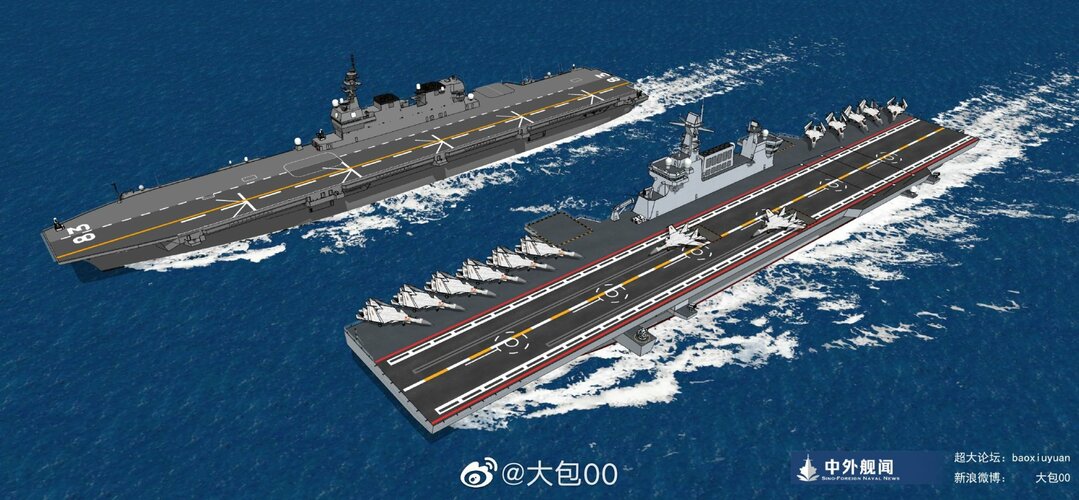
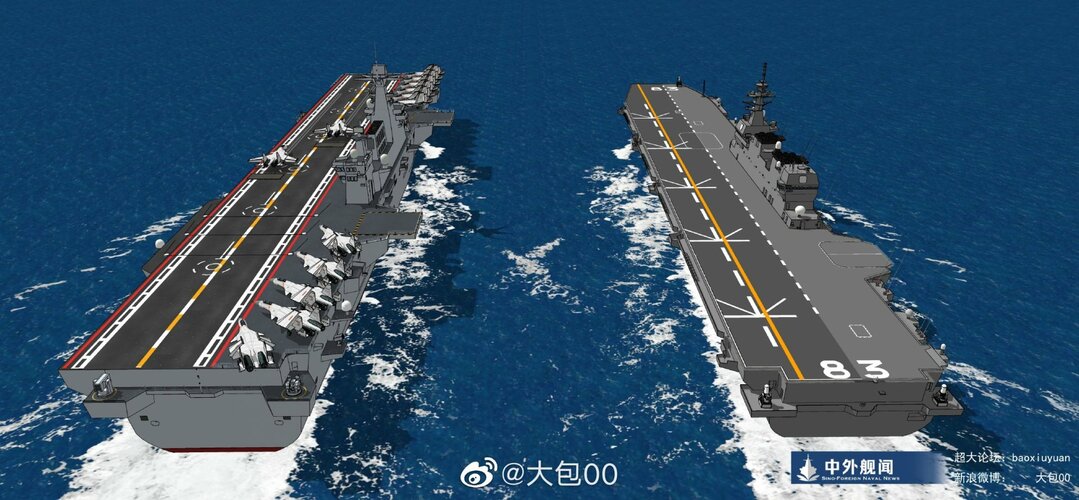
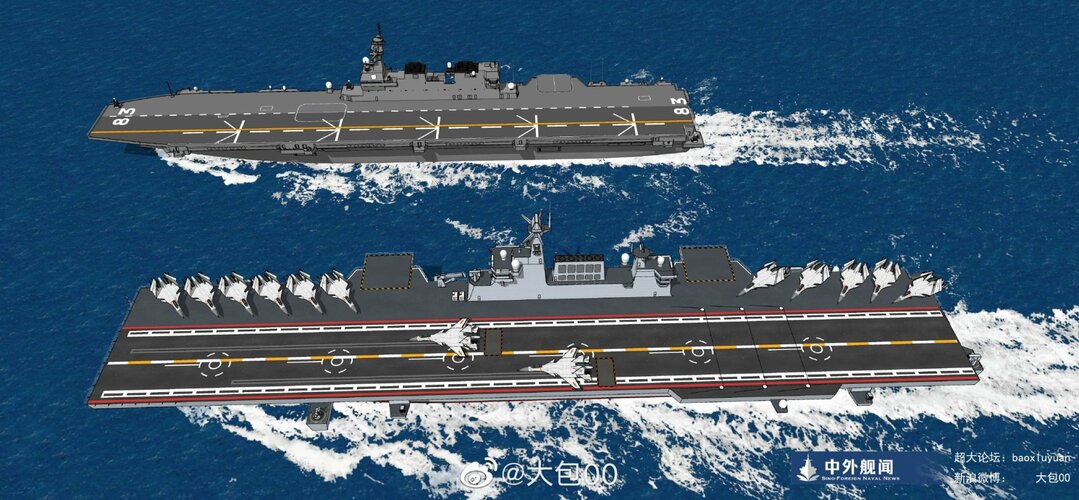
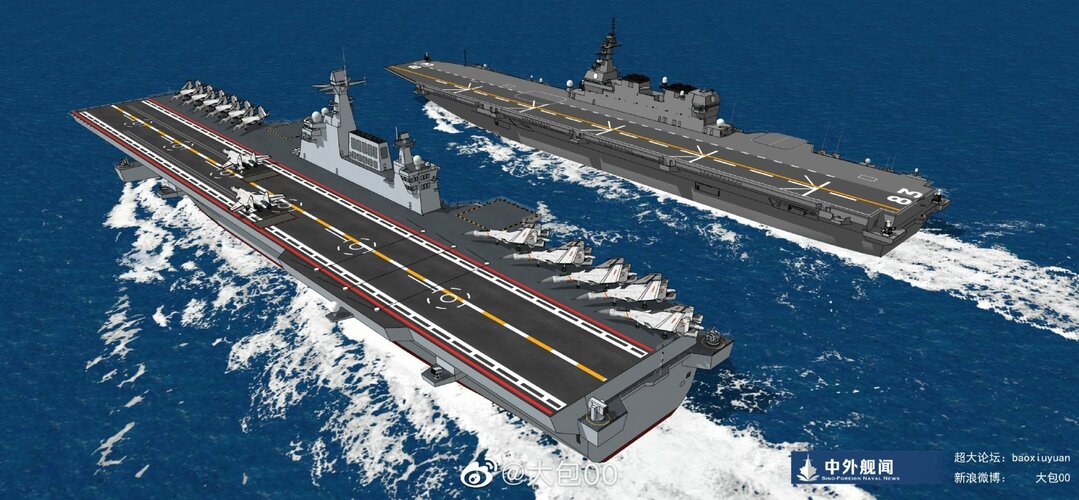
It's missing the emergency barrier net, unless they're only planning on having 2x arresting wires.I found this artist's view of a fictional type 076 LHD on the sinodefence forum. It's interesting to see that the straight deck configuration could be used with the J-15 while allowing bolters and crash landings without destroying aircraft parked. That makes a pretty compact ship. Probably totally unrealistic, but quite nice.
View attachment 710694View attachment 710695View attachment 710696View attachment 710697
I found this artist's view of a fictional type 076 LHD on the sinodefence forum. It's interesting to see that the straight deck configuration could be used with the J-15 while allowing bolters and crash landings without destroying aircraft parked. That makes a pretty compact ship. Probably totally unrealistic, but quite nice.
View attachment 710694View attachment 710695View attachment 710696View attachment 710697
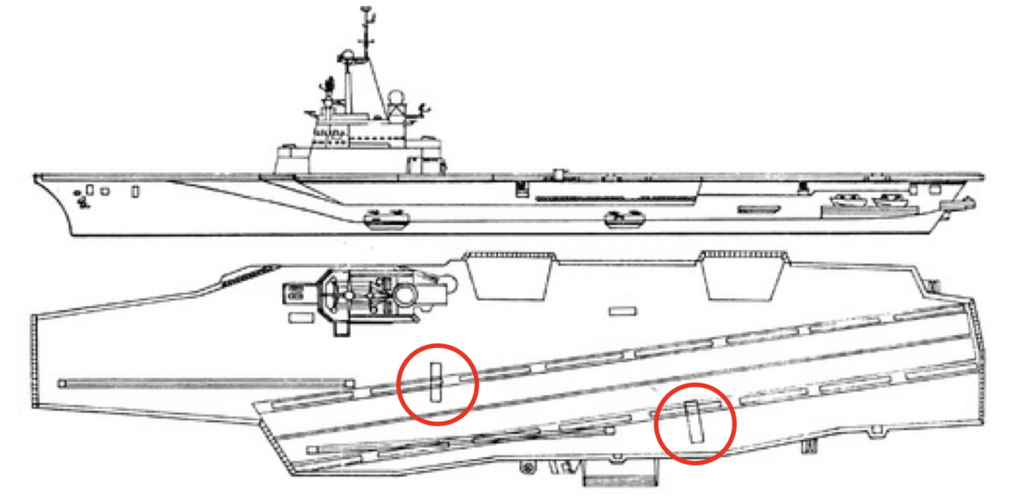
It's suite true.Pretty interesting design.
While people often say angled decks allow for simultaneous take offs and landings.
That's only true for large carriers. Smaller ships, even those with angled decks.. are less likely to allow that
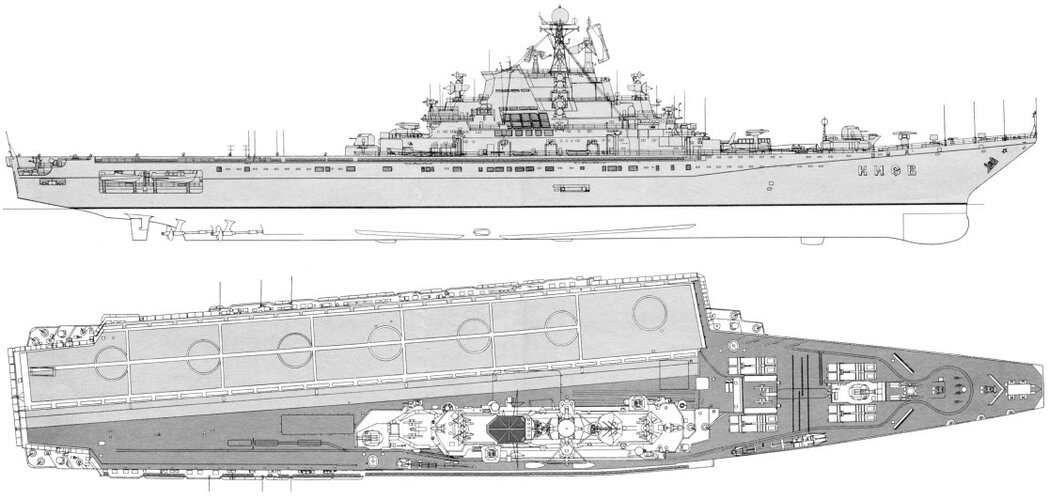
That example picture (CdG?), the bow cat is awfully far to port. Move it ~20ft to starboard and you've cleared the landing area.Pretty interesting design.
I am wondering why dot we see any conversions do this in the past.
back then we saw a lot of straight deck ww2 ships being converted to angled decks.
At least for modern day fast jets.. while people often say angled decks allow for simultaneous take offs and landings.
That's only true for large carriers. Smaller ships, even those with angled decks.. are less likely to allow that.
The CdG, Foch, etc.. the catapults are well into the angled landing area, preventing you from doing that.
View attachment 710930
in which case, why not just use the regular straight deck since you are already limited to take offs and landings at separate times. It will at least reduce the costs of conversion work.
the only potential issue is a greater likelihood of an errant aircraft crashing into the island or parked aircraft
For reasons I don't fully understand, virtually all designs with one bow and one waist cat have the bow cat on the port side, blocking the landing area. That this is consistent across carrier operating nations makes me think there's a good reason, I just don't know what it is....That example picture (CdG?), the bow cat is awfully far to port. Move it ~20ft to starboard and you've cleared the landing area.
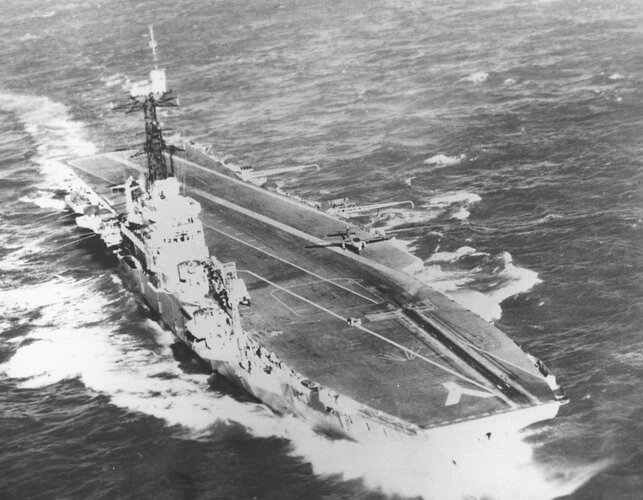
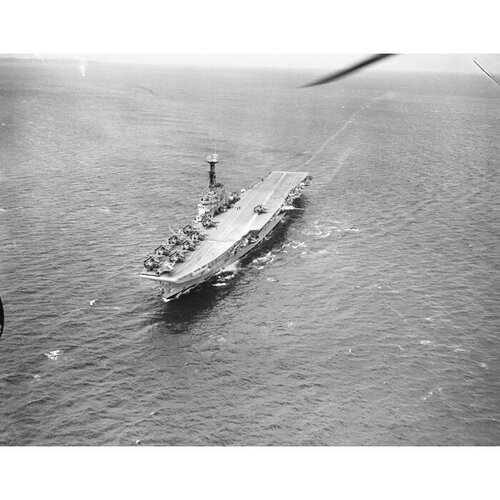
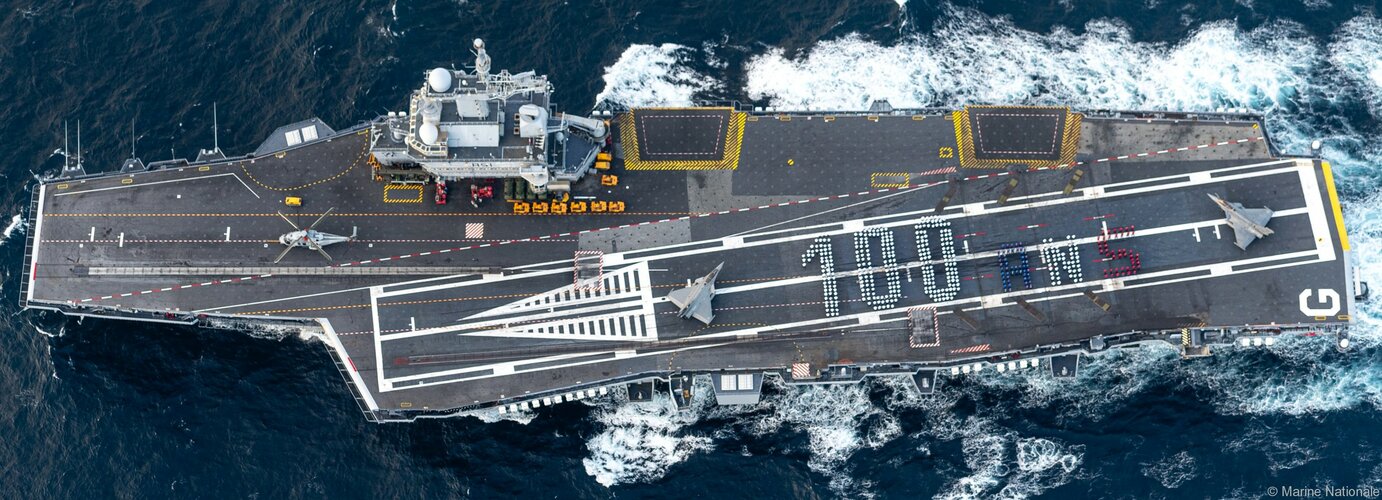
Line the cat up on whatever line that is that the helo is centered on.CdeG, while not having the lift has the island much further forward than many carriers. Most likely there are a bunch of Command and control facilities on the decks beneath and inboard of the island. It also looks like you would potentially have problems with aircraft wingspan relative to the island if you move the cat to starboard.
View attachment 711027
I just realized the yellow line indicates the edge of the E-2 wingtips, so everything should behind that.Moving the forward catapult towards the centerline would prevent parking any aircraft on the forward deck and bring E-2 wingtip dangerously close to the island.
This would be all the more possible as it is not necessary, as on converted straight-deck aircraft carriers, (Essex, Colossus, Centaur...) which were quite narrow. A wider vessel could have one part of the deck dedicated to parking and another to catapulting/landing.so it goes back to my original point.
for small carriers, why not just keep the deck straight, because simultaneous operations wouldn't be possible either way
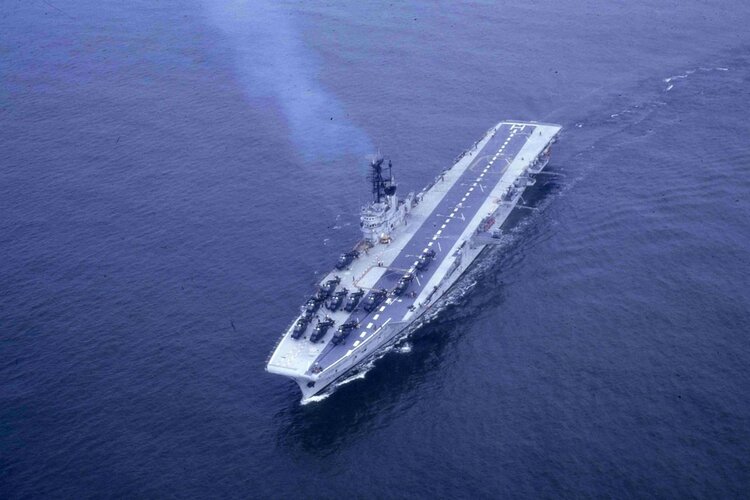
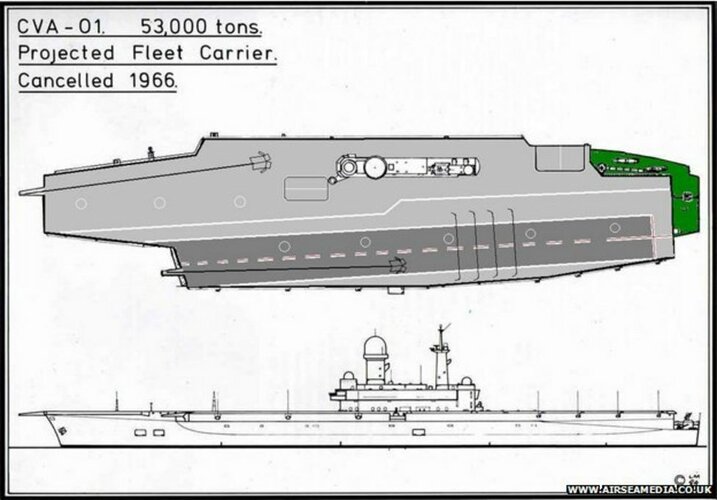
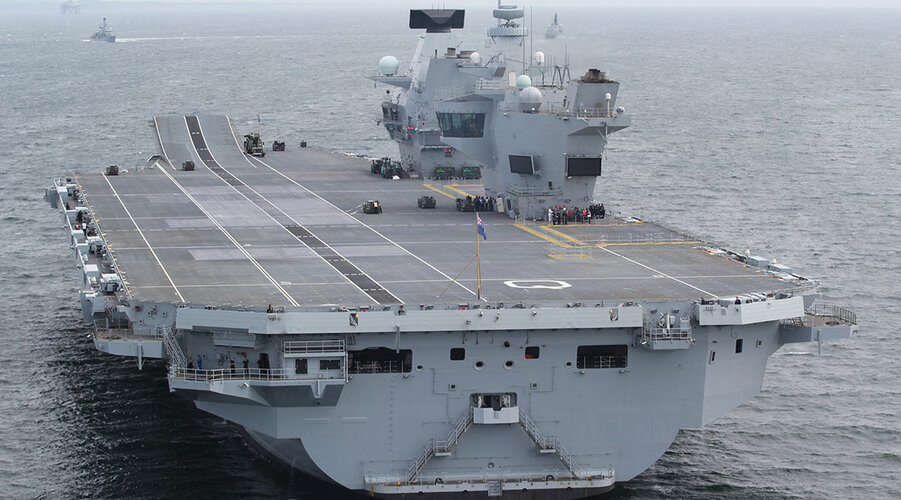
Bugger, hadn't realized the E2s were that wide a wingspan (or that CdG was so narrow, whichever). Why didn't France buy Turbo Stoofs?Moving the forward catapult towards the centerline would prevent parking any aircraft on the forward deck and bring E-2 wingtip dangerously close to the island.
Because the stoof isn't an AEW&C aircraft.Why didn't France buy Turbo Stoofs?
Tracker, Trader, Tracer, all the same airframe. And apparently the Turbo Stoofs have a negative wind over deck requirement on short catapults...Because the stoof isn't an AEW&C aircraft.
Turbo E-1 Tracer? The E-1 was a dead end, Grumman had its work cut out to make the E-2 a workable AEW&C aircraft.
There never were any E-1 Tracers that had been modernized with turboprop engines or a new radar (the E-1 used a modified version of the radar in the Skyraider and Gannet AEW versions).Bugger, hadn't realized the E2s were that wide a wingspan (or that CdG was so narrow, whichever). Why didn't France buy Turbo Stoofs?
For general arrangement of new construction, though, I'd make sure that my COD/AEW could clear the island while also still clear of the landing path.
Because there are two separate concerns for air operations:
- the basic self protection rotation: CAP and AEW off the cats, plane guard helo, ASW helo, tanker?, maybe fixed wing ASW if you have Stoofs or Vikings. This runs pretty much 24/7 unless the weather gets so bad they have to shut down flight ops.
- the strike package: whether a single big alpha strike like the Nimitz were built around or a more continuous waves of smaller flights like the Fords were built to do (note that Fords can probably also still do an alpha strike). This you only do when needed.
Different fuselage, different tail, differrent wing because of the different wing-folding mechanism necessitated by that big radome on top.Tracker, Trader, Tracer, all the same airframe. And apparently the Turbo Stoofs have a negative wind over deck requirement on short catapults...
The difference in wingspan is 8ft (2.5m), but since only the right wing matters from a clearance perspective, the Hawkeye’s impact on the foul deck line is only 4ft (1.25m)… really not that significant.Size comparison of E-1 and E-2 here:
Fuselagem diferente, cauda diferente, asa diferente por causa do mecanismo de dobramento de asa diferente exigido por aquele grande radome no topo.
Em suma, uma fuselagem diferente. Admito que está relacionado ao Rastreador.
Um Trader foi convertido no protótipo aerodinâmico Tracer, todos os Tracers de produção eram novos.
